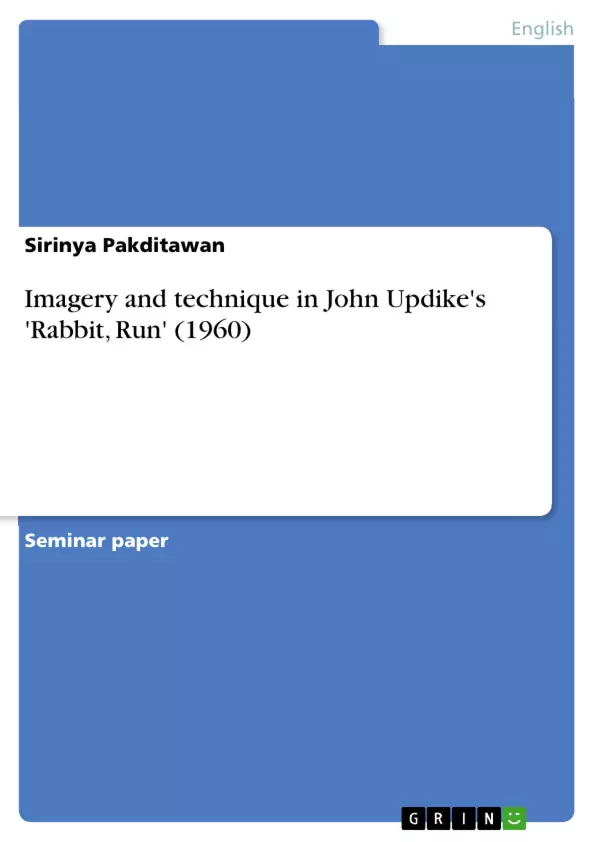Perhaps the most revered Updike novels are his Rabbit tetralogy, comprised of four books that ran from 1959 to 1991, which detail the center of American life, i.e. the middle class. Hence, the protagonist Harry ‘Rabbit’ Angstrom can be regarded as Updike’s most famous character. From his Rabbit series, the first novel Rabbit, Run is without doubt Updike’s most recognized book. In Updike’s own words, Rabbit is a character that is similar to the author. Hence, Updike once told Michael Rogers in an interview that even though he does not have the same social background and sociological circumstances as his character Rabbit, many of his ideas and thoughts enter Rabbit’s head. Thus, one might be justified in claiming that the Rabbit novels are also partly autobiographical.
However, since the novel Rabbit Run has been published, some critics have not held it in great esteem.
Nevertheless, Detweiler also claims that today the novel can be appreciated more fully for its artistic qualities – and these qualities are, in fact, quite numerous. Hence, there are many critics who appreciate Updike’s style and his mastery of language. For example, Rachael C. Burchard calls Updike’s art of writing “superb” and says that “[h]is work is worth reading if for no reason other than to enjoy the piquant phrase, the lyric vision, the fluent rhetoric”.
In the following, it will be analyzed which techniques Updike uses in the novel Rabbit, Run. Hence, it will be focused primarily on the narrative technique. In a second step, the structure of the novel will also be analyzed and the central motif of the quest will be dealt with.
Table of Contents
- Introduction
- Narrative Technique
- Structure and Central Motif
- Summary
- Bibliography
Objectives and Key Themes
This essay aims to analyze the narrative techniques, structure, and central motif of John Updike's novel "Rabbit, Run" (1960). The essay focuses primarily on the narrative technique used in the novel before delving into its structure and exploring the central motif of the quest.
- Narrative technique
- Structure of the novel
- Central motif of the quest
- Character development of Harry 'Rabbit' Angstrom
- Critical reception of the novel
Chapter Summaries
The introduction provides a brief overview of John Updike's work and his most renowned character, Harry 'Rabbit' Angstrom. The essay also outlines the author's exploration of sex, religion, and art in his fiction, specifically highlighting the "Rabbit" tetralogy.
The chapter on narrative technique will delve into the specific techniques used by Updike in "Rabbit, Run," focusing on the style and language employed in the novel. The analysis will also examine the author's use of imagery and symbolism.
The chapter on structure and central motif will analyze the overarching structure of the novel, including its distinct sections and the role of the central motif of the quest. The essay will explore how this motif drives the narrative and influences the protagonist's actions.
Keywords
The main keywords and focus topics of the text include John Updike, "Rabbit, Run," narrative technique, structure, central motif, quest, character development, Harry 'Rabbit' Angstrom, American society, and the exploration of sex, religion, and art in Updike's fiction.
- Quote paper
- Sirinya Pakditawan (Author), 2005, Imagery and technique in John Updike's 'Rabbit, Run' (1960), Munich, GRIN Verlag, https://www.grin.com/document/94548



